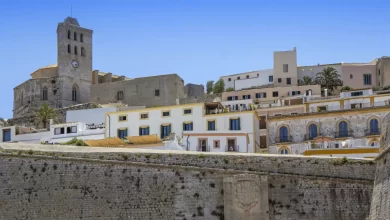Unveiling the Enigmatic Elegance: The Fallen Angel Statue
In the heart of the art world, there stands a magnificent and enigmatic creation that has captured the fascination of countless admirers over the years – the Fallen Angel Statue. This exquisite work of art has a tale as intriguing as its intricate design. In this article, we embark on a journey to uncover the secrets, history, and awe-inspiring details that surround this iconic sculpture.
The History of the Fallen Angel Statue
The Fallen Angel Statue’s origins date back to the 19th century in France. Sculpted by the talented artist, Auguste Rodin, this masterpiece was initially conceived as a part of a larger project titled “The Gates of Hell.” The sculpture was meant to depict a fallen angel who had been cast out from heaven, a theme that has resonated with audiences throughout the ages.
Interestingly, Rodin’s vision for this statue was inspired by various literary works and mythologies that explored the concept of a celestial being falling from grace. He wanted to capture the essence of this tragic narrative in his artwork.
The Aesthetic Marvel of the Fallen Angel Statue
One cannot help but be captivated by the sheer aesthetic brilliance of the Fallen Angel Statue. Crafted from bronze, the statue stands over six feet tall, dominating its surroundings with its imposing presence. The attention to detail is nothing short of extraordinary – from the intricate feathers on its wings to the expression of melancholy on its face.
The statue’s posture is a striking amalgamation of beauty and sorrow. The fallen angel is shown with outstretched wings, as if still reaching for the heavens from which it was cast down. Its face carries a sense of longing and melancholy, evoking empathy and contemplation from those who gaze upon it.
The Symbolism Behind the Sculpture
Rodin’s Fallen Angel Statue is not just a stunning piece of art; it’s also laden with profound symbolism. This sculpture serves as a reminder of the human condition, the constant struggle between good and evil, and the consequences of our choices.
The fallen angel represents the eternal conflict within ourselves, the duality of our nature. It’s a poignant reflection on the idea that even the most celestial beings can be brought low by their own actions. This symbolism has made the statue a powerful and thought-provoking piece for art enthusiasts and philosophers alike.
The Mythological Influences
To truly appreciate the Fallen Angel Statue, one must delve into the rich tapestry of mythological influences that inspired its creation. The concept of fallen angels can be traced back to various religious and mythological sources, such as Lucifer from Christian theology and Icarus from Greek mythology.
Lucifer, the most famous fallen angel, was cast out of heaven due to his rebellion against God. His story of pride and downfall has been a subject of fascination for centuries and undoubtedly played a role in shaping Rodin’s vision for this sculpture. Additionally, the Icarus myth, where a young man’s hubris leads to his fall from the sky, may have also contributed to the narrative behind the Fallen Angel Statue.
The Fallen Angel in Pop Culture
The influence of the Fallen Angel Statue extends beyond the realm of art and mythology. It has also left an indelible mark on popular culture. This captivating sculpture has made appearances in various movies, books, and even music.
One notable example is its appearance in the 1994 film “Interview with the Vampire,” where the statue serves as a powerful symbol of the immortal and the damned. This portrayal further solidified the Fallen Angel Statue’s status as a cultural icon.
Lesser-Known Facts about the Fallen Angel Statue
While the Fallen Angel Statue is widely celebrated, there are some lesser-known facts that add to its mystique:
- Original Purpose: As mentioned earlier, the statue was initially intended for “The Gates of Hell.” It was only later that it gained recognition as a standalone masterpiece.
- Multiple Versions: Rodin created several versions of the Fallen Angel Statue. The most famous one resides in the Rodin Museum in Paris, but there are other replicas around the world.
- Restorations: Over the years, the statue has undergone several restorations to preserve its beauty and structural integrity. Skilled craftsmen have meticulously cared for this masterpiece.
- Controversial Reception: When the statue was first exhibited in the late 19th century, it received mixed reviews. Some critics found it too avant-garde for their tastes, while others hailed it as a groundbreaking work of art.
- Permanent Residency: The Fallen Angel Statue has found its permanent home at the Rodin Museum in Paris, where it continues to inspire and mesmerize visitors from around the globe.
The Fallen Angel Statue is not just a work of art; it’s a testament to human creativity, imagination, and the eternal quest to explore the profound aspects of our existence. Its beauty, symbolism, and historical significance make it a treasure that deserves to be celebrated and admired.
As we stand in awe of this magnificent sculpture, we are reminded of our own struggles, choices, and the indomitable spirit that drives us to reach for the heavens, even when we have fallen from grace. The Fallen Angel Statue stands as a timeless testament to the power of art to evoke emotions, provoke thoughts, and transcend the boundaries of time and space.





